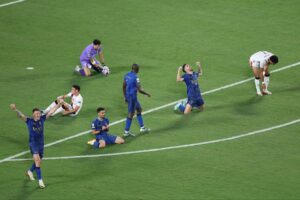
Google has recently unveiled Android 16, the latest iteration of its operating system, specifically designed for Pixel phones. This release introduces a handful of new features with promises of further updates in the future. Despite the numbering suggesting a fresh start, Android 16 marks the 36th major release in a lineage that dates back nearly two decades. This historical milestone underscores the evolution of smartphones from experimental gadgets to essential tools in our daily lives.
In 2008, the smartphone landscape was rife with uncertainty and experimentation. Fast forward to 2025, and the formula for smartphone functionality has been thoroughly explored. As a result, each new Android release offers fewer groundbreaking changes. Google’s approach with Android 16 exemplifies this trend, focusing on refinement over revolution.
Subtle Changes in a Mature Platform
While Android 16 may appear to be one of the most understated updates yet, this is by design. Google’s long-term goal has been to create an environment where users no longer need to worry about Android version numbers. The latest release is a testament to this vision, offering a stable, mature platform with minimal disruptions.
Upon installing Android 16 on a Pixel device, users might need to delve into settings to confirm the update’s presence. The visual changes are subtle, catering to those who are particularly attentive to Android’s nuances. For instance, Google has tweaked the icon style in the overview screen and expanded options in the overview app menus. These minor adjustments are part of a broader strategy, with more significant changes anticipated with the future release of Material 3 Expressive.
UI Enhancements and Developer Focus
Although the user interface changes are modest, they reflect thoughtful improvements. Google’s predictive back gesture, which allows users to preview the previous screen, now integrates seamlessly with button navigation. This enhancement, while minor, contributes to a more intuitive user experience.
Android 16 also introduces a shift towards edge-to-edge rendering for apps targeting the new API level 36. This change eliminates the navigation background, creating a more immersive experience. Historically, Android apps have struggled to adapt to larger form factors, a challenge Google has been addressing since the Android 12L release. Foldable phones, in particular, have faced issues with app scaling, but with Android 16, all large-screen devices are set to benefit from adaptive apps.
Historical Context and Expert Insights
The evolution of Android over the years mirrors the broader trends in the tech industry. Early smartphone software was characterized by rapid innovation and frequent updates. However, as the technology matured, the focus shifted towards stability and user experience. According to industry experts, this transition is a natural progression for any technology that reaches a certain level of maturity.
“Android 16 is a reflection of how far we’ve come since the early days of smartphones. It’s less about flashy features and more about providing a seamless, reliable experience for users,” said tech analyst Sarah Thompson.
Looking Ahead: The Future of Android
The release of Android 16 marks a significant step in Google’s journey towards creating a stable and user-friendly operating system. As the platform continues to evolve, future updates will likely focus on refining the user experience and supporting emerging technologies such as foldable devices and augmented reality.
While Android 16 may not offer the excitement of earlier releases, it represents a mature, polished platform that meets the needs of today’s smartphone users. As Google continues to innovate, the focus will remain on enhancing the functionality and usability of its operating system, ensuring that Android remains at the forefront of mobile technology.
In conclusion, Android 16 is a subtle yet significant update that underscores Google’s commitment to creating a seamless and reliable user experience. As the platform continues to evolve, users can expect further refinements and innovations that will enhance the way we interact with our devices.







